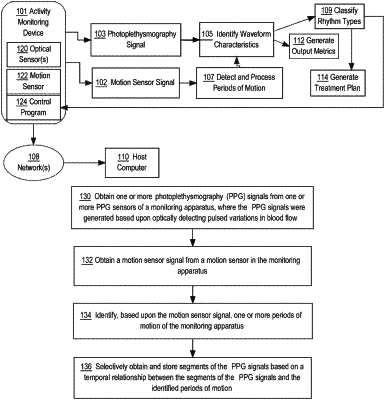| CPC A61B 5/721 (2013.01) [A61B 5/002 (2013.01); A61B 5/0022 (2013.01); A61B 5/0261 (2013.01); A61B 5/4818 (2013.01); A61B 5/6814 (2013.01); A61B 5/6815 (2013.01); A61B 5/6824 (2013.01); A61B 5/742 (2013.01); A61B 5/746 (2013.01); A61B 5/363 (2021.01)] | 21 Claims |

|
1. A method comprising:
obtaining a photoplethysmography (PPG) signal for a user based on data from one or more optical sensors of an apparatus;
generating PPG waveform data based, at least in part, on the PPG signal;
detecting a cardiac arrhythmia event based, at least in part, on the PPG waveform data; and
responsive to detecting the cardiac arrhythmia event based, at least in part, on the PPG waveform data, thereafter, prompting the user to perform an electrocardiogram (ECG) measurement.
|